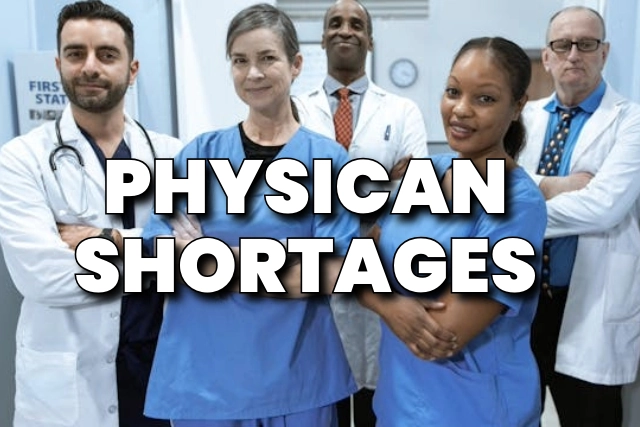Rural Healthcare in Crisis: Why States Like Kansas, Texas, and New Mexico Are Facing Alarming Physician Shortages
Across the United States, rural hospitals are facing a shared—and growing—challenge: not enough physicians, specialists, and advanced practice providers (APPs) to care for the communities that need them most. This shortage is especially acute in rural parts of Kansas, Nebraska, Oklahoma, Texas, Mississippi, and New Mexico, where many counties have only one healthcare facility—or none at all.
At Momentum Healthcare Staffing, we specialize in recruiting high-quality providers who are ready to serve in underserved areas. Here’s a breakdown of what’s causing the provider shortage—and how we’re helping hospitals overcome it.
The Widening Rural Provider Gap
Nationwide, the U.S. is facing a projected shortage of up to 86,000 physicians by 2036, according to the AAMC. But that shortage doesn’t affect all communities equally.
Rural states like these are particularly hard-hit:
- Kansas, Nebraska, Oklahoma – Struggling to recruit hospitalists, ER doctors, and family physicians in sparsely populated counties
- Texas – Facing an alarming shortfall in both primary care doctors and psychiatrists across rural counties
- Mississippi – Has one of the lowest physician-to-patient ratios in the country
- New Mexico – Despite giving NPs full authority since 1993, provider shortages remain critical in rural regions
Shortages by the Numbers
Here’s what the data shows about specific needs across these six states:
Texas
- Primary Care Shortage: 3,375 FTEs projected shortage by 2030
- Psychiatrists: Shortage expected to grow to over 1,200 by 2030
- 435 Health Professional Shortage Areas (HPSAs) across the state
Source: Texas DSHS
Mississippi
- Among top three states with highest physician shortage ratios
- Over 50% of residents live in a primary care HPSA
Source: Floridians for Dental Access
New Mexico
- Physician shortage to worsen from 57 to 101 per 100,000 residents by 2030
- Rural residents face long delays despite NPs having full practice authority
Source: Rio Grande Foundation
Why It’s So Hard to Hire in These Areas
Rural hospitals face a tough reality: attracting providers to live and work in remote areas is difficult due to:
- Limited amenities and schooling options
- Isolation and poor access to specialty training
- Lower Medicare/Medicaid reimbursements
- Fewer local medical residency programs
- Lifestyle concerns for provider spouses
Momentum’s Proven Rural Placement Strategy
At Momentum Healthcare Staffing, we’ve built a system designed specifically for rural and underserved hospitals.
✅ Affordable rates (with deep discounts on your first 10 placements)
✅ 90-day replacement guarantee
✅ Personalized recruiting across all specialties
✅ Permanent and temp-to-perm options for physicians, NPs, and PAs
We take the time to find candidates who want to stay—not just fill a shift.
Areas Most in Need of Physicians
Here’s a sample of cities and towns currently facing critical provider shortages:
Kansas: Colby, Liberal, Hays, Dodge City, Parsons
Nebraska: Valentine, McCook, Broken Bow, Chadron, Alliance
Oklahoma: Guymon, Altus, Woodward, Ada, Duncan
Texas: Uvalde, Dumas, Jasper, Raymondville, Alpine
Mississippi: Clarksdale, Kosciusko, McComb, Forest, Brookhaven
New Mexico: Gallup, Silver City, Deming, Artesia, Truth or Consequences
You Don’t Have to Face This Alone
If your hospital is located in any of these rural communities—or serves a similar population—you don’t have to handle recruiting alone. Momentum Healthcare Staffing is ready to match you with the physicians and advanced practice providers you need to keep your facility strong and your community healthy.
📞 Call us at (877) 558-3782 or contact us here to discuss how we can support your staffing goals.













Recent Comments